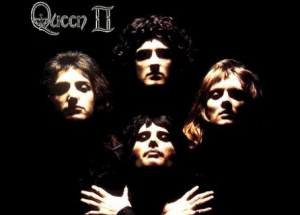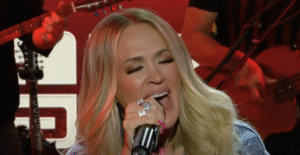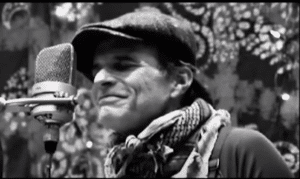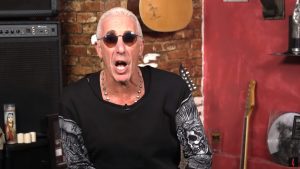A Guide To The Doobie Brothers’ Line-Up Changes
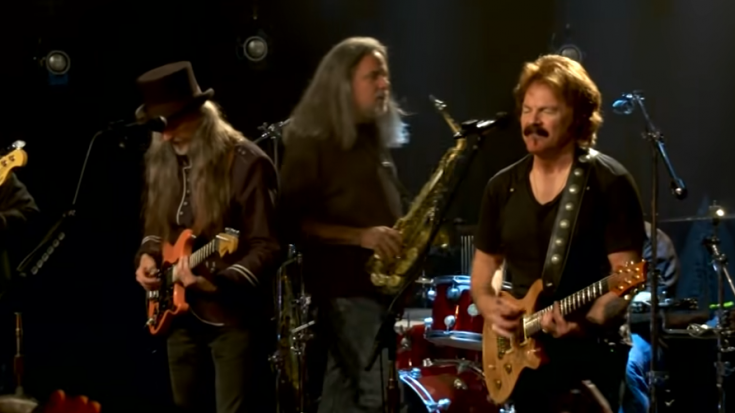
The Doobie Brothers - Kingscup20 / Youtube
Listening to The Doobie Brothers’ multi-textured catalogs offered some sort of shock value to fans and critics alike. This was due to three distinct eras that the band underwent, with major creative changes being present in the initial two. The first incarnation saw the Doobies with a more rock and roll approach thanks to Tom Johnston’s directive, but when he left in 1977 due to health problems, Michael McDonald’s influence steered the band into a soulful direction. Here are the lineup changes the band went into throughout its extensive career.
1970-71: Tom Johnston, Patrick Simmons, Dave Shogren, John Hartman
The band was formed by Tom Johnston on guitars and John Hartman on drums, donning the name Pud at first. They soon found another vocalist in Patrick Simmons, along with the inclusion of bassist Dave Shogren, now carrying the name The Doobie Brothers. They then recorded their self-titled debut a year after formation, but Shogren left during the sessions for the follow-up, Toulouse Street.
1971-73: Tom Johnston, Patrick Simmons, John Hartman, Tiran Porter, Michael Hossack
Shogren was replaced by Tiran Porter, who was previously with Simmons in the acoustic group Scratch. They also added another drummer, Michale Hossack, who was from a Bay Area group named Mourning Reign that had just broken up.
1973-74: Tom Johnston, Patrick Simmons, John Hartman, Tiran Porter, Keith Knudsen
Hossack left the band in the midst of the What Were Once Vices Are Now Habits sessions due to burnout from their activities. This led to the addition of Keith Knudsen, but he was limited to backing vocal contributions at the time.
1974-75: Tom Johnston, Patrick Simmons, John Hartman, Tiran Porter, Keith Knudsen, Jeff “Skunk” Baxter
By the time Steely Dan, whom the band toured with, decided to quit live shows, Jeff Baxter joined the band to become a fulltime member. Baxter had already played on the band’s earlier albums and completed the Doobies’ guitar trio and drum duo.
1975-77: Patrick Simmons, Tom Johnston, Michael McDonald, Jeff “Skunk” Baxter, Tiran Porter, Keith Knudsen, John Hartman
Johnston was hospitalized during the band’s 1975 Stampede tour due to a bleeding ulcer which led to advice telling him to stop touring for a year. Baxter suggested hiring Michael McDonald, who was Steely Dan’s backup singer and keyboardist, to fill in for Johnston’s place. Johnston stayed with the band till 1977 however, leaving during the sessions of Livin’ On The Fault Line.
1977-79: Patrick Simmons, Michael McDonald, Jeff “Skunk” Baxter, Tiran Porter, Keith Knudsen, John Hartman, Bobby LaKind
The band hired lighting roadie Bobby LaKind as his talents as a percussionist and background singer was uncovered. McDonald also took the lead creative role and wrote songs for the band like “What A Fool Believes”, which gave him the first of his three Grammys.
1979-80: Patrick Simmons, Michael McDonald, John McFee, Tiran Porter, Keith Knudsen, Chet McCracken, Bobby LaKind, Cornelius Bumpus
Baxter wanted to keep the guitars as a central element to the Doobie’s sound instead of McDonald’s keyboard-based approach, so he left and was replaced by John McFee from Clover, who had also been part of Elvis Costello’s debut album. John Hartman was dissatisfied with the music industry as well, leaving the band to raise horses on his ranch, replaced by Chet McCracken. Cornelius Bumpus was also added to the lineup for sax, keyboard, and vocal parts.
1980-82: Patrick Simmons, Michael McDonald, John McFee, Willie Weeks, Keith Knudsen, Chet McCracken, Bobby LaKind, Cornelius Bumpus
Tiran Porter left after One Step Closer was completed and was replaced by session player Willie Weeks, while Patrick Simmons left but was convinced to play for one more tour. A September 11, 1982 show had Johnston and Hartman come in for a few songs with the band.
1987: Tom Johnston, Patrick Simmons, Michael McDonald, John McFee, Jeff “Skunk” Baxter, Tiran Porter, Michael Hossack, John Hartman, Keith Knudsen, Chet McCracken, Bobby LaKind, Cornelius Bumpus
Five years down the road after the final concert, Knudsen coaxed his former buddies to raise funds for veterans. Only two members didn’t join – Shogren and Weeks. It turned into a small tour, along with a Russian date that was part of a festival to promote peace between the US and the Soviet Union.
1988-90: Tom Johnston, Patrick Simmons, Tiran Porter, John Hartman, Michael Hossack, Bobby LaKind, Cornelius Bumpus
Due to the reunion tour’s success, the band got together officially with the Toulouse Street and The Captain and Me lineups joining forces, with LaKind in addition. 1989’s Cycles was released due to this, and while Bumpus wasn’t included in the recording, he participated in the album’s supporting tour. LaKind left due to health issues, however, being replaced by Jimi Fox and Richard Bryant while Dale Ockerman also became a longtime keyboardist for the band.
1991: Tom Johnston, Patrick Simmons, Tiran Porter, John Hartman, Michael Hossack
The band shrank into a five-man act in 1991 where they released the album Brotherhood. It wasn’t successful, however, leading to Capitol Records dropping the band subsequently.
1992: Tom Johnston, Patrick Simmons, Michael McDonald, Jeff “Skunk” Baxter, Tiran Porter, Michael Hossack, John Hartman, Bobby LaKind, Cornelius Bumpus
The band came together for another cause, this time for Bobby LaKind who had terminal colon cancer. They held two concerts in 1992, with a $75,000 earning going into a fund for LaKind’s two sons. He died on December 24, 1992.
1993-95: Tom Johnston, Patrick Simmons, John McFee, Michael Hossack, Keith Knudsen, Willie Weeks
The band went on summer tours without a record label, with the first one seeing McFee’s return. Porter and Hartman left, while Weeks and Knudsen returned. Weeks left shortly, however, while John Cowan joined as a touring member along with sax player Danny Hull.
1995-96: Tom Johnston, Patrick Simmons, Michael McDonald, John McFee, Michael Hossack, Keith Knudsen, Cornelius Bumpus
McDonald returned since 1982’s farewell, ready for his first full-length tour with the band along with Bumpus. McFee was absent on some of the 1995 dates, however, replaced by Bernie Chiaravalle who was from McDonald’s solo group. Chet McCracken also subbed for Knudsen in a couple of shows, while a new long-term bassist in Skylark completed their touring lineup.
1996-2005: Tom Johnston, Patrick Simmons, John McFee, Michael Hossack, Keith Knudsen
Another quintet configuration which was augmented during live concerts with Skylark, keyboardist Guy Allison, and M.B. Gordy. Allison and Russo were also brought in for the 2000 record, Sibling Rivalry.
2005-10: Tom Johnston, Patrick Simmons, John McFee, Michael Hossack
After Knudsen died in 2005, the Doobies hired Ed Toth, who was previously a member of Vertical Horizon. Hossack eventually left due to health issues and died of cancer in 2012, while Skylark suffered a stroke and left the band shortly after.
2010-19: Tom Johnston, Patrick Simmons, John McFee
Cowan joined again to substitute for Skylark while jazz-trained drummer Tony Pia was hired as well. Pia stayed with the band till 2016, leaving the band with one drummer, Ed Toth. Percussionsut Marc Quinones from the Allman Brothers Band joined in 2018, while Bill Payne took the place of Allison in 2015. McDonald also contributed to 2014’s Southbound, where the Doobies teamed up with country acts to cover their classics.





